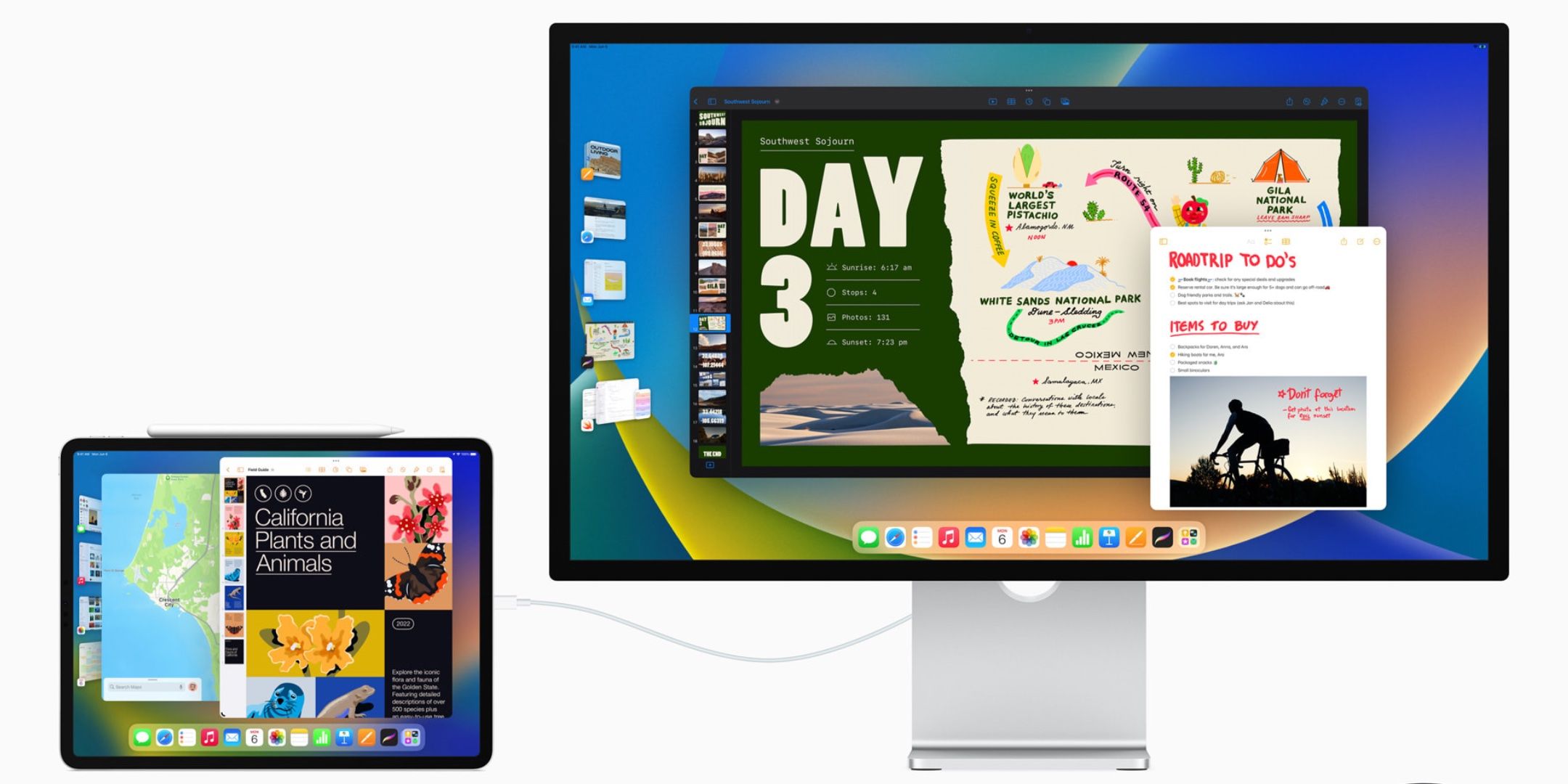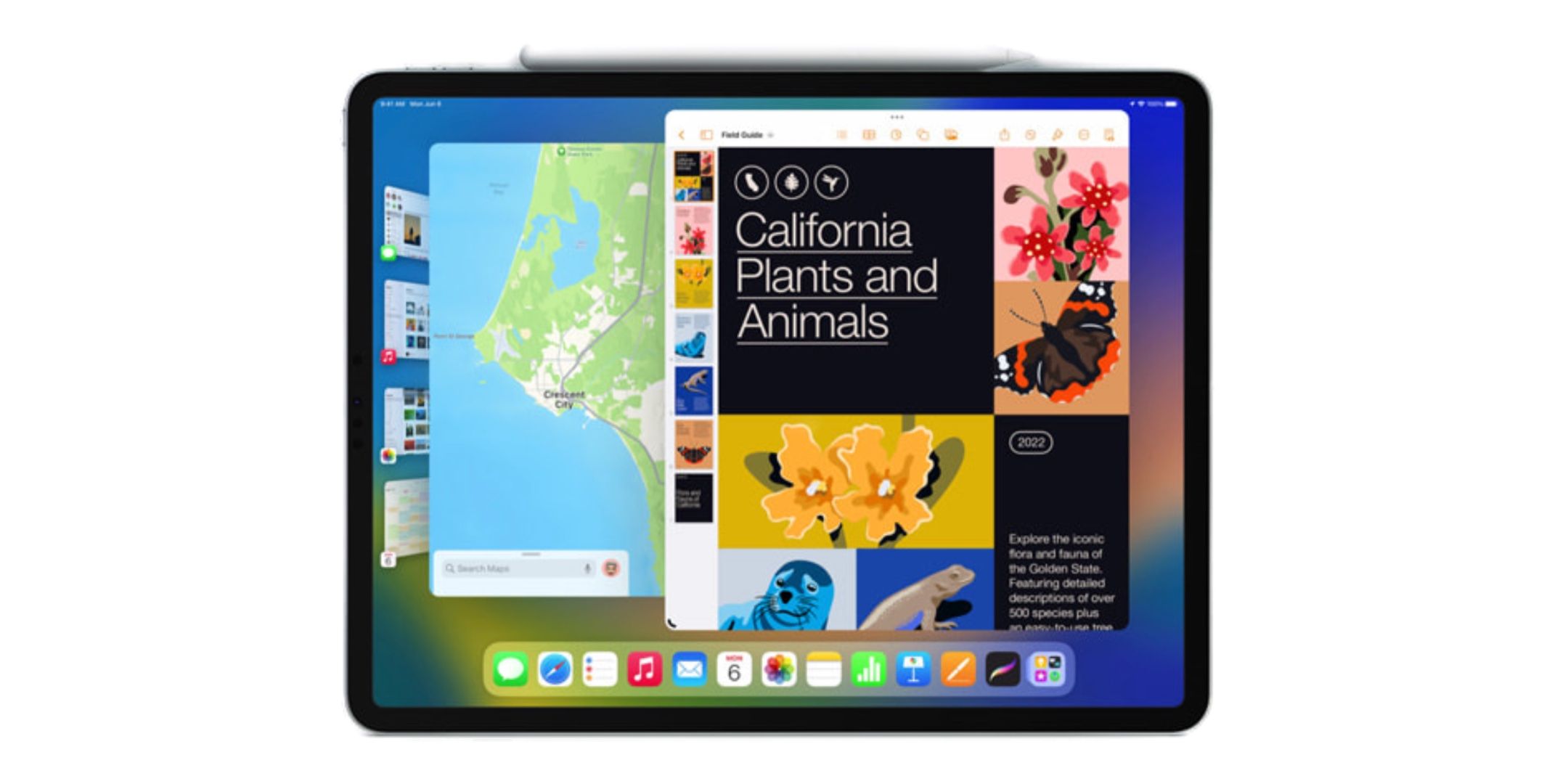Apple unveiled Stage Manager, a game-changing feature that adds multi-window and external display support to iPadOS 16, at the 2022 Worldwide Developers Conference — making the iPad 'Pro' for the first time. The iPad has been limited for quite some time, as it originally ran a blown-up version of iOS, the same operating system as iPods and iPhones. Even when the first iPad Pro was released in 2015, it shipped with the same version of iOS 9 that powered the iPhone 6s from that same year. Due to the system being designed for a smaller device, it couldn't use the extra space provided by an iPad. Even though iPads continued to harbor more and more processing power through systems-on-a-chip that would become Apple Silicon.
The shift toward a more-capable iPad started in 2019 with the first release of iPadOS, named iPadOS 13. The software's nomenclature remains parallel to iOS, despite only three versions of iPadOS. That's because it is impossible to ignore the connection between iOS and iPadOS — the two are fundamentally similar, and iPadOS has evident roots in iOS. However, the expanded version had benefits that made the experience better on a larger display with more processing power. A redeveloped file system, enhanced multitasking support, and desktop-class applications gave Apple's claims some validity. But while computing could be done on an iPad, it would usually require strange workarounds and inevitably take longer than using a traditional computer.
Last year, the gap between an iPad and a traditional laptop was all but erased — at least on paper. The 2021 iPad Pro featured Apple's M1 chip, the same processor sold in select MacBook Air and Pro models. The upgrade also added 5G-capable antenna bands for enhanced cellular connectivity and the same USB4/Thunderbolt 4 port found on the laptops mentioned above. After the changes, the iPad Pro with an M1 chip was nearly identical to the MacBook Air. It had the same processor, storage configurations and passive cooling method. The main difference was the input method — the iPad Pro with touch and iPadOS, the MacBook Air with point-and-click and MacOS.
Stage Manager Makes The iPad 'Pro'
The iPad had the hardware to match even the best of thin-and-light laptops, but the multi-touch input method isn't suitable for everyone. With multi-touch and the Apple Pencil, the iPad Pro was the superior device for some students and artists. However, until Stage Manager was unveiled, there was no way for users to multitask on an iPad efficiently. Sure, it was possible to have a few different applications open simultaneously and switch between them. But often, it felt like mundane tasks that could be quickly completed on a computer took ages using iPadOS. That's because there was no multi-window support, which is the ability to have multiple overlapping windows open simultaneously. It is a standard feature on the desktop-class operating system, though it was absent on iPadOS even as the iPad Pro saw massive performance and feature gains.
Stage Manager doesn't provide the same experience as MacOS, and that's for the best. When Apple added keyboard and mouse support to the iPad, it was a transformable pointer that could adapt to different buttons or objects on the display. Stage Manager is a similar adaptation of a desktop feature to the iPad — it allows users to have up to four windows open at once that can be resized and overlapped. The windows automatically shift to the left or right and come to the forefront when manipulated. In addition, it benefits the iPad's input method, as a finger is less precise than a mouse and keyboard.
Regardless, the ability to have up to four concurrent windows open on an iPad — and up to eight with full external display support — is a downright game-changer. It's now possible to complete everyday desktop tasks on an iPad without relearning how to do them on a limited version of iOS. For the first time, the iPad is truly a professional device. It can match the specifications of competing laptops and finally has an operating system to back up the iPad's raw power. Only time will tell how the new iPad user interface will affect the dynamic between iPadOS and MacOS, but for now, it's a viable alternative to a traditional computer.
Source: Apple


